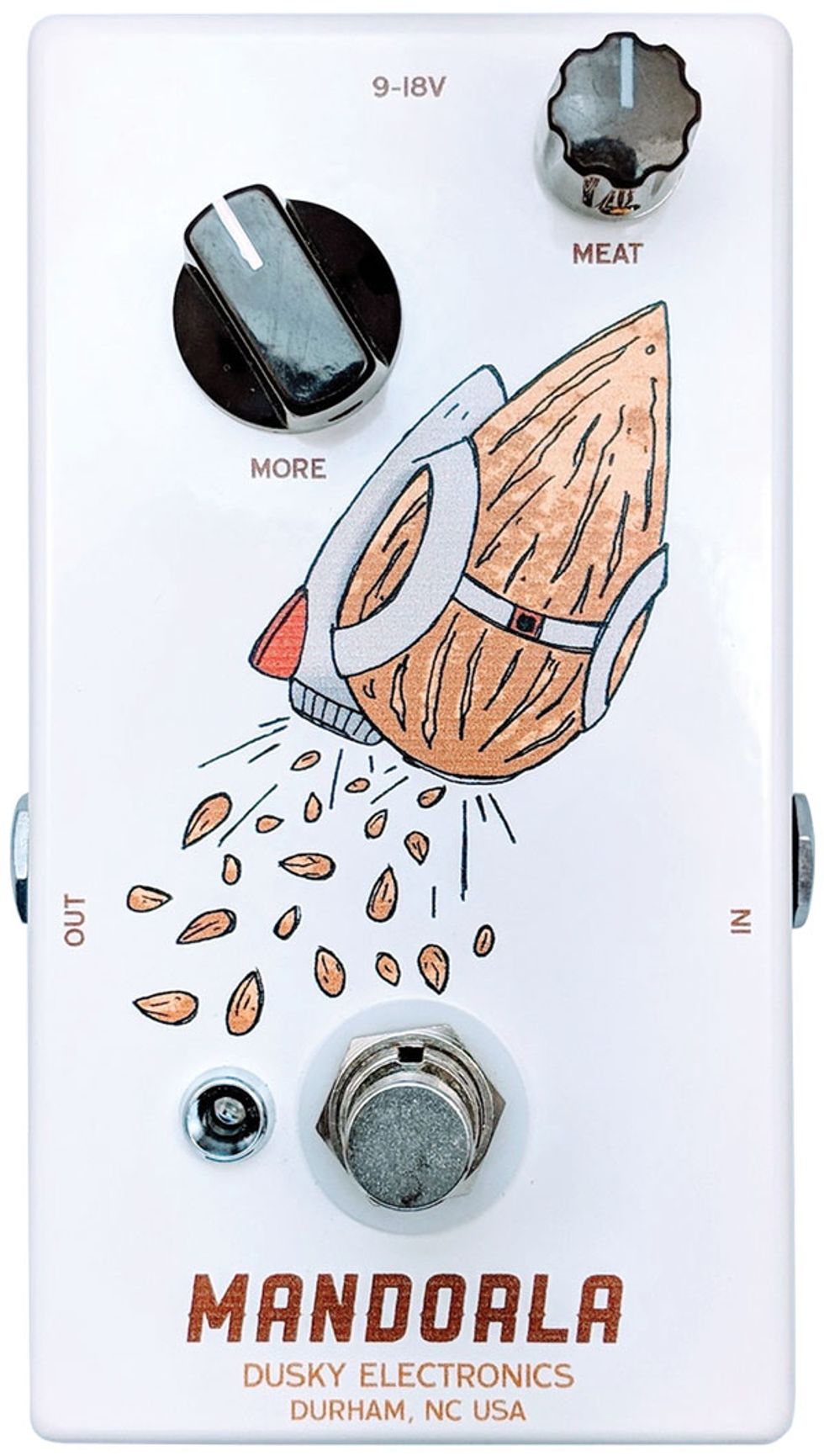
Many boost pedals claim transparency. Dusky Electronics makes no such boasts for their MOSFET-driven Mandorla boost. In fact, they go out of their way to call it a colored boost. So I laughed when I plugged in the Mandorla and thought, “It’s so transparent!” Upon reflection, and after a trip around the simple two-knob control set, I agreed with Dusky’s assessment. I didn’t hear transparency, but something better—a seamless interface between guitar and amp that retains the personality of both while expanding the tonal range of each.
It makes sense that Mandorla comes from the mind of an amp builder. At times, it can have a console preamp’s sensitivity and equalization power. It feels direct and immediate. The boost is considerable. But the real flexibility comes from the “meat” control that functions as a treble boost/bass cut left of noon and a bass boost clockwise from center. For little amps like my Champ, it can lend a steroidal muscularity that makes an 8" speaker feel like a 12"—especially in recording situations. On bigger amps, the treble boost capability is the star, adding a charged and reactive presence that makes leads and slashing chords rip.
Test gear: Fender '72 Telecaster Deluxe (neck pickup), Fender Champ
More and Meat controls at noon, 2 o'clock, 3 o'clock, and finally More at 3 o'clock and Meat at maximum.
Ratings
Pros:
Dynamic and sensitive controls and circuit. Console preamp sensitivity and color. Great range of treble and bass boost sounds.
Cons:
Bigger knobs might be nice for toe adjustment.
Street:
$160
Dusky Electronics Mandorla
duskyamps.com
Tones:
Ease of Use:
Build/Design:
Value:








![Rig Rundown: Russian Circles’ Mike Sullivan [2025]](https://www.premierguitar.com/media-library/youtube.jpg?id=62303631&width=1245&height=700&quality=70&coordinates=0%2C0%2C0%2C0)

















